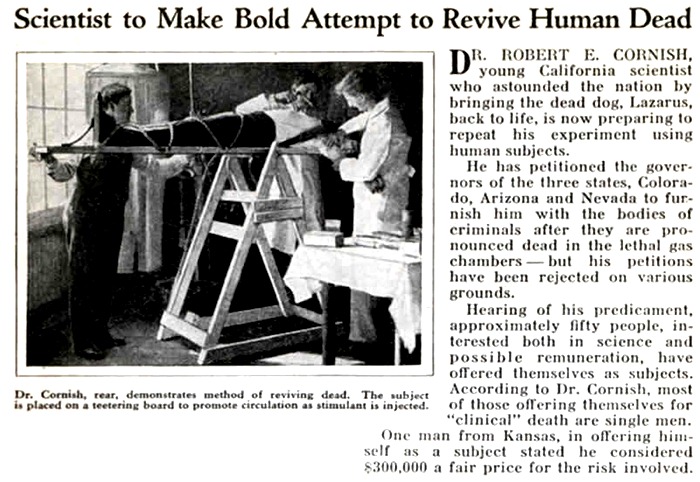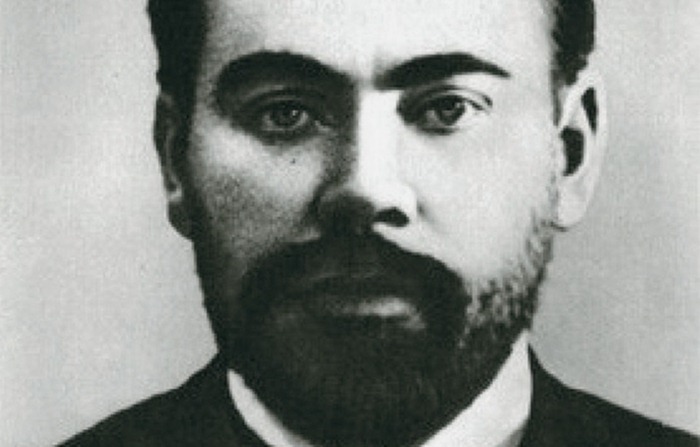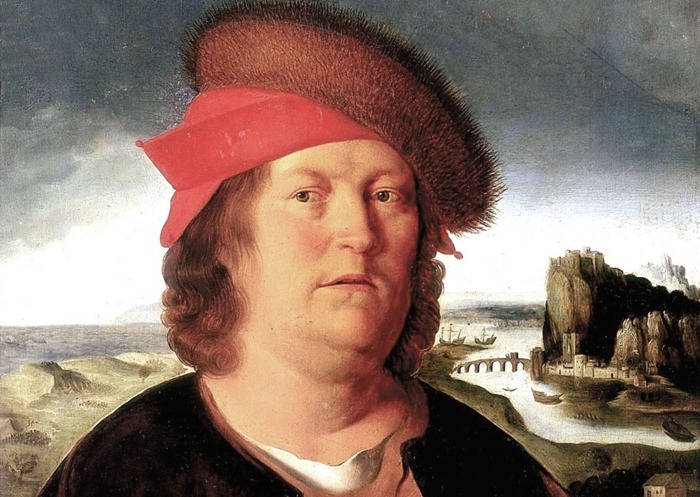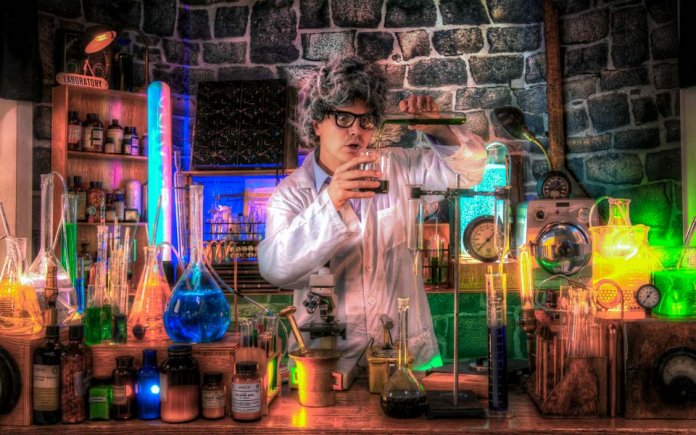Mary Shelley, Frankenstein's "mother", popularized the "mad scientist" archetype. In her book, the physician was so obsessed with his idea of reviving lifeless matter that he threw both common sense and ethical standards for her.
But the same happens in real life. Many scientists, even during their lifetime nicknamed "insane" conducted experiments that balance on the brink of legal and moral principles (and sometimes step over this line).
Introducing you top 5 mad scientists.
5. Robert Cornish
 Dr. Robert Cornish was obsessed with becoming a resuscitator. He believed that a not too damaged and recently died organism could be restored with a large dose of anticoagulants and a swing table, which would swing the body to "restart" blood circulation.
Dr. Robert Cornish was obsessed with becoming a resuscitator. He believed that a not too damaged and recently died organism could be restored with a large dose of anticoagulants and a swing table, which would swing the body to "restart" blood circulation.
Strange, but true: Cornish managed to revive two dogs - Lazarus IV and V, who were killed by an ether overdose. The doctor has repeatedly petitioned the prisons to allow him to use the bodies of executed criminals. In 1948, Cornish was contacted by assassin Thomas McGonigal, who was awaiting a gas chamber. He was willing to lend his body to experience. The problem was that the scientist needed a body immediately after the execution, and the authorities were afraid that the animated criminal would be released (you cannot be executed twice for one crime). As a result, McGonigal's request for resuscitation was rejected, and Cornish switched to other experiments.
4. Alexander Bogdanov
 The rating of mad scientists could not do without a representative of Russia. Unlike Cornish, who became obsessed with one idea, Bogdanov, a revolutionary and prominent science fiction writer, had broad interests. In particular, he specialized in blood research. His influence and status led to the creation of the Blood Transfusion Institute in 1926. In the end, he became convinced that blood transfusions could be used to rejuvenate, and possibly to extend the life of the human body.
The rating of mad scientists could not do without a representative of Russia. Unlike Cornish, who became obsessed with one idea, Bogdanov, a revolutionary and prominent science fiction writer, had broad interests. In particular, he specialized in blood research. His influence and status led to the creation of the Blood Transfusion Institute in 1926. In the end, he became convinced that blood transfusions could be used to rejuvenate, and possibly to extend the life of the human body.
Bogdanov subjected his body to numerous blood transfusions. Ironically, in 1928, the scientist died due to a hemolytic transfusion reaction after a blood transfusion of a patient with malaria.
3. Giles Brindley
 This British physiologist revolutionized the injectable management of erectile dysfunction and is remembered for his speech at the Urology Association meeting in Las Vegas, 1983.
This British physiologist revolutionized the injectable management of erectile dysfunction and is remembered for his speech at the Urology Association meeting in Las Vegas, 1983.
He talked about his successful experiences in the treatment of erectile dysfunction with papaverine injections. During the lecture, the 57-year-old the doctor showed slides of his own erect penis and then took off his pantsto show that papaverine treatment can induce an erection without erotic stimulation. Brindley gave himself an injection before the lecture. He even hobbled down so that the first rows of spectators could assess the degree of swelling of the genitals.
His works formed the basis of many modern means for potency, the best of them we published earlier.
2. Paracelsus
 Swiss scientist of the 16th century became the founder of toxicology... He argued that small doses of toxic substances can be used to advantage, and that only the dose determines whether a substance is a drug or a poison.
Swiss scientist of the 16th century became the founder of toxicology... He argued that small doses of toxic substances can be used to advantage, and that only the dose determines whether a substance is a drug or a poison.
An expert in medicine and philosophy was also no stranger to alchemy and occultism. In 1537, he wrote De Rerum Naturae, in which he described some of his alchemical secrets, including the creation of a homunculus, a tiny artificial man.
1. Wendell Johnson
 Iowa State University psychologist sad known for his crazy speech therapy experimentconducted in 1939. It was attended by 22 children who did not have parents.
Iowa State University psychologist sad known for his crazy speech therapy experimentconducted in 1939. It was attended by 22 children who did not have parents.
Johnson and his graduate student Maria Tudor divided the children into two groups of 11. Half of the children in each group were stutterers and the other half spoke normally.
The happy group underwent positive speech therapy. In this group, the children were told that their speech was very correct and clear.
In another group, children were mocked for 6 months to see how it would affect their stuttering.
Some of the children who ended up in the second group had no speech problems before the experiment. And after it, pronounced symptoms of stuttering appeared and fixed for life.

